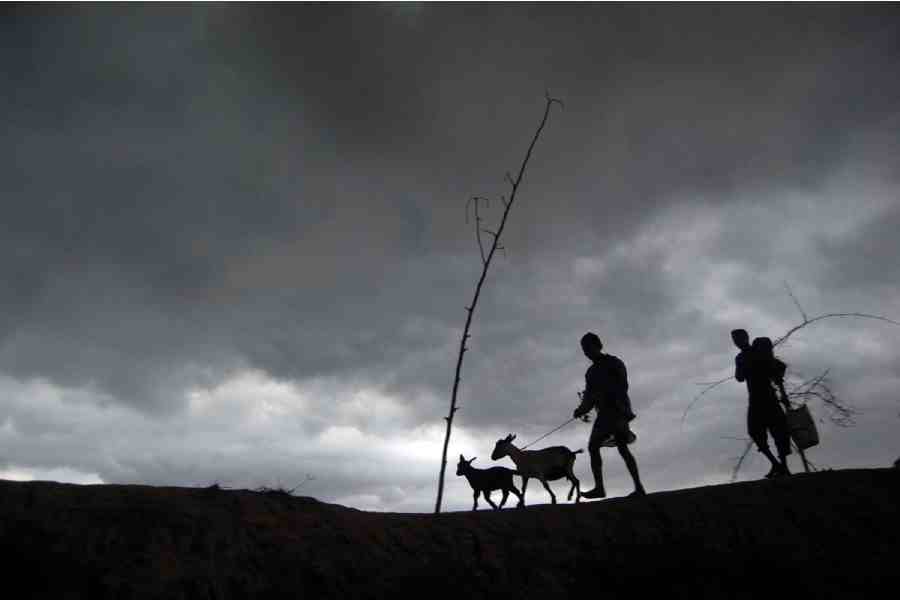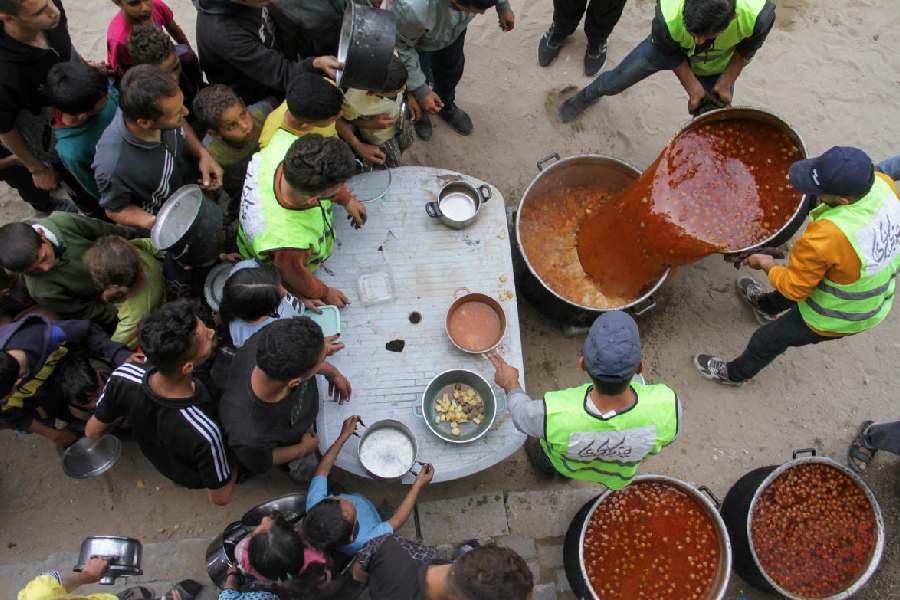The monsoon is much celebrated in Indian literature. One reason for this is the haunting possibility that the rains may not come. And in India, where a major part of agriculture is monsoon-dependent, its failure will mean a barren kharif season. In 2023, with the possibility of a weather phenomenon called El Niño, India is looking at a very real chance of drought.
Simply put, El Niño is a band of abnormally warm seawater that forms in the equatorial Pacific Ocean, stretching from the International Date Line at 180° longitude to 120° west longitude, including the Pacific coast of South America, meaning Peru and Chile.
One of the major impacts of El Niño is that it causes the trade winds to weaken. The trade winds blow from east to west along the equatorial region and are so called because they have been used by trading ships to fill their sails since time immemorial.
Since a lot of the rains are brought about by cloud-bearing trade winds that blow inland, El Niño’s impact on the Indian monsoon is a given. However, the monsoon is not solely dependent on the trade winds. The extreme summer heat causes the air over the landmass to rise, causing a vacuum and allowing moisture-laden air from over the sea to rush in. When this air tries to climb the Himalayan barrier, the cooler temperatures precipitate heavy rain clouds that bring succour to the parched land beneath.
This is, of course, the school version of events. The college version includes the Indian Ocean Dipole or IOD. When the sea surface temperature in the eastern Indian Ocean is lower than normal, while the sea surface tempe- rature in the western Indian Ocean is higher than normal, it is said to be a negative IOD. A positive IOD is when the exact opposite happens. While a nega-tive IOD brings an abundance of rain to Australia and Indonesia, a positive IOD means a good monsoon in India.
“The reason India had a normal monsoon in 1997 des-pite the presence of a strong El Niño was a positive IOD,” says Sugata Hazra, former director of oceanographic studies at Jadavpur University, Calcutta.
The El Niño of 2006 too did not have a major impact on the monsoon because of a positive IOD. The relationship between El Niño, IOD and the Indian summer monsoon, however, is quite complex. “The strong El Niño of 2015 led to a delayed, and eventually, insufficient monsoon and droughts on the east coast though preceded by floods in Gujarat and Assam,” adds Hazra, explaining that the IOD was positive but not strong enough.
A strong positive means a one-degree difference in temperature between the western and eastern parts of the ocean. This year, the difference is 0.1 degree according to the most recent data available.
Hazra continues, “The El Niño phenomenon is not active yet. We are in the neutral phase of Enso or El Niño/Southern Oscillation.” Enso is the cycle of warming and cooling that takes place in roughly 2-7 year intervals over the equatorial Pacific Ocean and the atmosphere above it. El Niño is its warm phase, while La Niña is its cool phase.
El Niño’s influence is not bound by geographical boundaries. It has, in its different avatars, caused landslides in California, floods in the Peruvian desert, balmy weather in the cold Chilean winter, the chill of snow in usually pleasant Mexicanwinters, drought in India and raging wildfires in Australia and Indonesia.
“Climatologists have a term for the meteorological sleights of hand by which El Niño turns dry places wet, cold places warm and warm places cold. They call them teleconnections, literally long-distance links, and by the end of the 20th century these links had begun to seem so strong, so obvious, that it was hard to remember that people everywhere had not always known about El Niño.” So writes J. Madeline Nash in her 2003 book El Niño: Unlocking the Secrets of the Master Weather-Maker.
Hazra too talks of teleconnections though he doesn’t use the term. He says, “Just think, an event in the far-off Pacific will decide if Purulia faces a drought or a season of plenty.” It is an example of the butterfly effect, wherein a small change in one area can have large consequences far away.
Says Rajat Chaudhuri, author of the climate fiction — or cli-fi — The Butterfly Effect, “While it begins as a weather event, El Niño will very obviously have wide-ranging impacts. Through droughts and lower crop yields, it can affect incomes, trigger inflation and drive migration. It will also impact fish production, possibly leading to loss of livelihoods. On the other hand, there are some indications that El Niño can suppress tropical cyclone formation in the Bay of Bengal. Climate models have also predicted that the El Niño may intensify heat waves this summer.”
The Indian Meteorological Department (IMD) has predicted a normal monsoon this year, or at least 96 per cent of the nationwide average rainfall of 87cm. Private forecaster Skymet has, however, predicted a below normal monsoon, with rains being normal in June but petering out as the season advances.
According to the information we now have, the monsoon will be normal,” says Sanjib Bandopadhyay, deputy director-general of IMD Calcutta. “Of course, we do not have all the parameters yet, we will update our prediction as and when we get them.” The meteorologist tells The Telegraph an update should be expected by end May, a point seconded by Hazra, who says they will get a concrete idea of El Niño’s formation and impact only then.
El Niño was so named because of its December connection. According to folklore, it was sailors from Paita (in Peru) who first noticed the strange warm current that appeared around Christmas time. They called it La corriente del Niño or The Christ Child’s Current. It was the only time that it rained in the Peruvian desert and the teeming shoals of anchovies in the bay went missing. In 1925, the year we now know had a strong El Niño, Robert Cushman Murphy — who went on to head the department of ornithology in New York’s American Museum of Natural History — was present in Paita. He observed that flocks of seabirds — cormorants, pelicans, boobies — were dying in large numbers, presumably because of the missing silver rivers of fish, and fouling up bays and shorelines. The hydrogen sulphide from the rotting carcasses was painting the bottoms of the fishing boats, giving rise to the other name for El Niño — El Pintor or the painter.
The cold counterpart ofEl Niño was named only in 1999 — La Niña or the little girl to match the hot-headed boy. La Niña has a few tele- communications of her own but that is another story.
For the time being, suffice to say, El Niño has been around for a long time — it is said to be responsible for the infamous seven-year famine in Egypt during the times of the pharaohs — but its impact is worsening. Chaudhuri says, “Global warming and climate change can aggravate some of the impacts of El Niño including, in the long run, an increase in frequency and intensity of El Niño events.”












